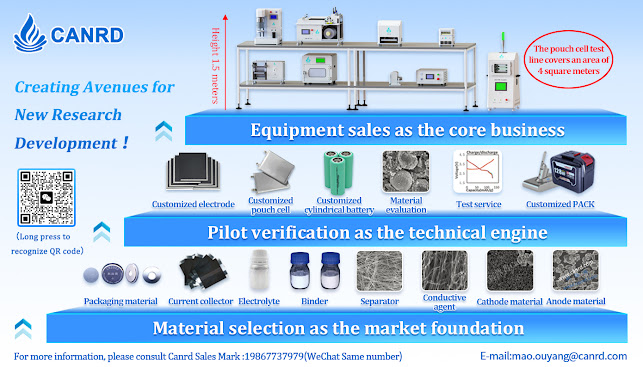An article to understand EIS lithium battery applications, with typical circuit model diagrams
A complete guide to soft pack battery assembly, a must-read for researchers
A complete analysis of lithium battery internal resistance, understand the core parameters in one article!
Practical EIS data fitting, a must-have skill for battery professionals!
Key auxiliary materials for lithium batteries: binders
Key auxiliary materials for lithium batteries: binders
Polymer and its derivative binders
1 Cellulose binder
Sodium carboxymethyl cellulose (CMC) is a cellulose binder that has been widely studied. It is a carboxymethylated derivative of cellulose. CMC is an ionic chain polymer water-based binder that forms a transparent viscous glue after swelling with water. It has the advantages of being difficult to ferment, good stability, low price, safety and environmental protection.
Negative electrode binder performance requirements, test methods and failure mechanisms!
Negative electrode binder performance requirements, test methods and failure mechanisms!
Binders have a low mass ratio in the electrode and do not participate in the electrochemical reaction. Their main function is to adhere the active material and the conductive agent to the current collector to keep the electrode intact . Binders affect the formation of the solid electrolyte interface (SEI) , the charge transfer inside the electrode and between the electrode - electrolyte interface , the wetting behavior of the electrode, and the cycle performance and cost of the battery .
Analysis of the influence of slurry quality on coating surface fluctuation|Lithium battery production process front end (mixing/coating)
Analysis of the influence of slurry quality on coating surface fluctuation|Lithium battery production process front end (mixing/coating)
An Overview of the Four Steps in the Formation of Lithium Batteries
The formation process is an indispensable step in the manufacturing of lithium-ion batteries, as it directly affects the battery’s performan...

-
Effects of Conductive Agents and Binders on Compression and Compactability of NCM Powders In the field of energy development, lithium-ion b...
-
Determined to win ‖ Sun Jie's team from Tianjin University: Micro-multifunctional additives significantly improve the ultra-high voltage...
-
Single-sided pole piece manufacturing method This issue introduces the production process of single-sided pole pieces to help you obtain s...
-
The "Three Musketeers" of Lithium Batteries: Lithium Battery Packaging Film, Lithium Battery Separator and Battery Cell Blue Film ...
-
Interfacial friction makes the vertical structure of lithium metal batteries summary A practical high-energy-density lithium metal battery r...
-
First author: Meng Li Corresponding author: Boryann Liaw Corresponding Unit: Idaho National Laboratory, USA Achievements at a Glance This ...
-
Lithium cobalt oxide is the first commercialized cathode material for lithium-ion batteries. Its theoretical gram capacity after complete de...






